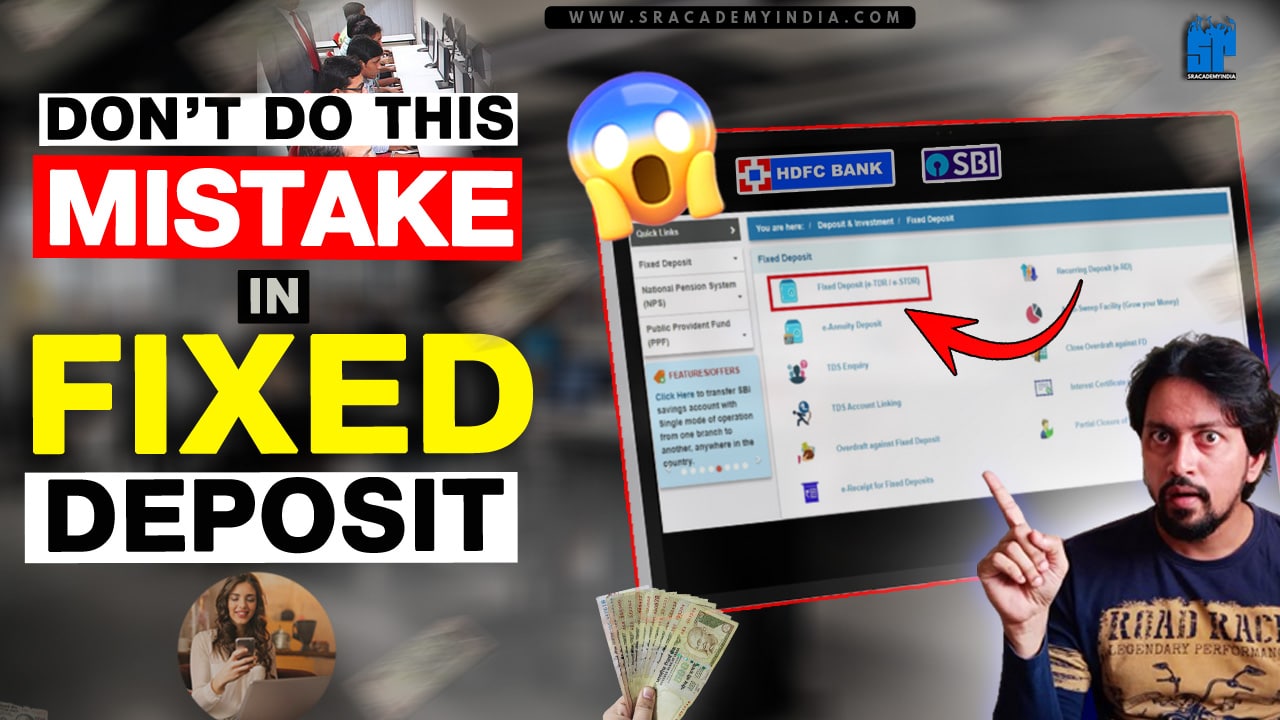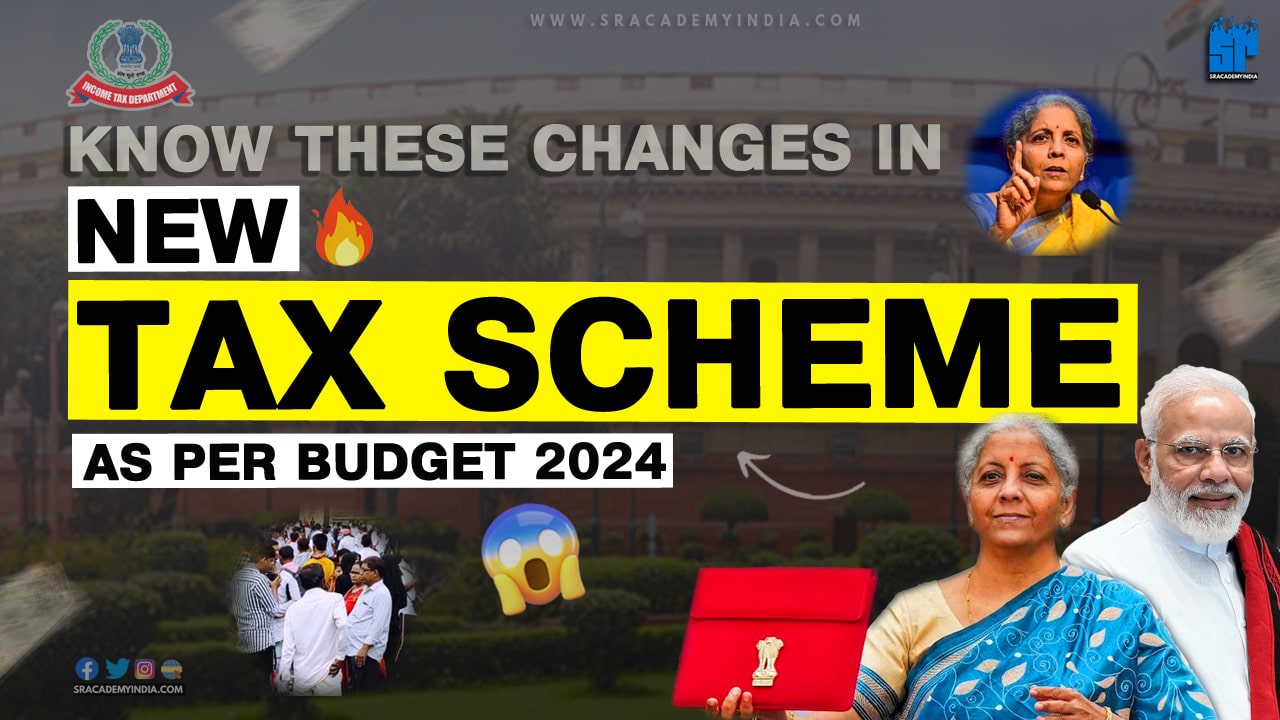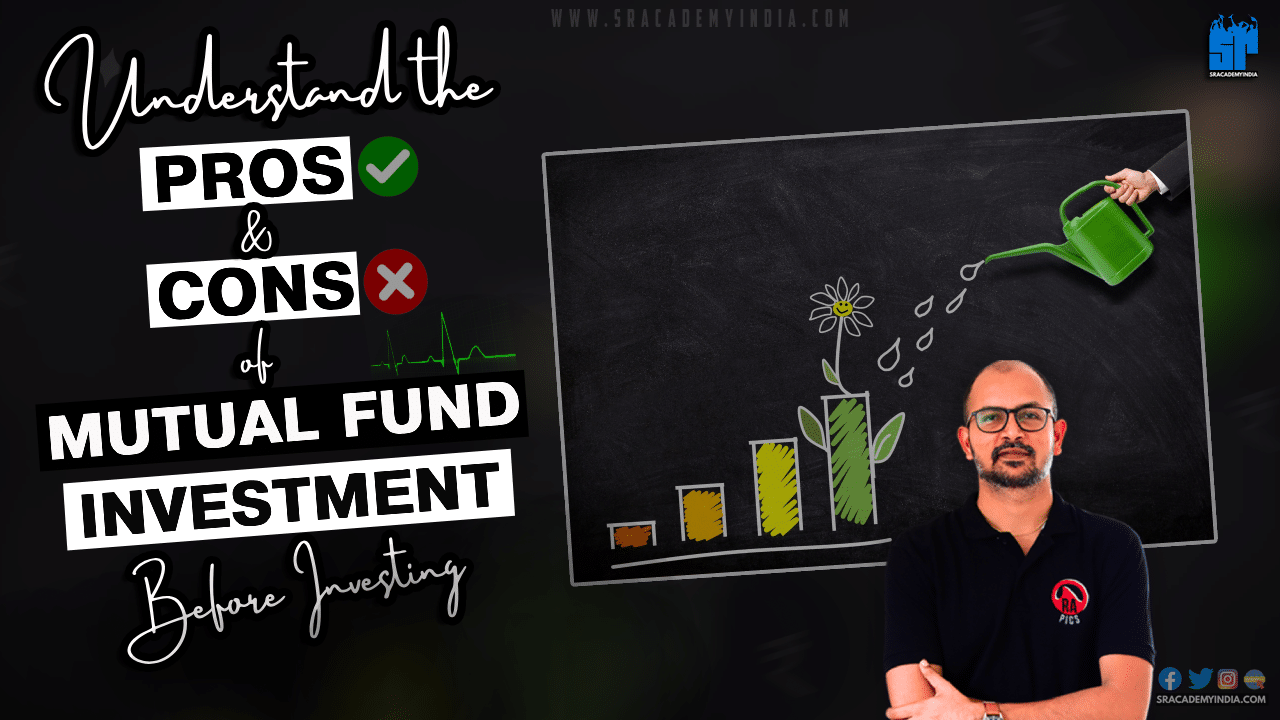In this article “50 Multiple Accounting Multiple Choice Questions – Part – 2”, we are going to cover Moderate level of Accounting questions that will be suitable for the Accounting positions like Junior Accountant, Account Assistant, Senior Accountant, etc.
We tried to cover most of the Multiple choice questions (MCQs) which will be useful while attending Computer-Based Tests (CBT). In case you have not gone through Part -1 of “50 Accounting MCQs“, please go through this.
So, please spare your valuable time to learn this topic. We shared valuable inputs for your knowledge purpose as well.
1. The debts which are not recoverable are called?
A) Doubtful debts
B) Goods debts
C) Bad debts
D) None of the above
Answer: (C) Bad debts
Explanation: Bad debts are Debts that are not recoverable by the enterprise. It may be on Loan given or Goods sold or Services rendered etc.,
2. Money spent of Rs.5,000/- received from debtors during the year for obtaining a factory license
A) Revenue expenses
B) Capital expenses
C) Deferred revenue expenses
D) None of the above
Answer: (B) Capital expenses
Explanation: Collection of Debtors is a Revenue receipt and such amount of Rs.5,000/- spent towards factory license is of a capital nature.
Read more: 18 Key Points about Capital Expenditure
3. Cash of Rs.2,20,000 received from debtors during the year
A) Revenue receipt
B) Capital receipt
C) Both Capital & Revenue
D) None of the above
Answer: (A) Revenue receipt
Explanation: Cash of Rs.2,20,000 received from debtors is the money received through normal business operations. Therefore, it is a Revenue receipt.
4. A fire occurred in a Hyderabad shoe company and received an insurance claim of Rs.5.5 Crores from the General Insurance company.
A) Revenue receipt
B) Capital receipt
C) Both Capital & Revenue
D) None of the above
Answer: (B) Capital receipt
Explanation: A fire occurred in a Shoe company and received an insurance claim of Rs.5.5 Crores from the General Insurance company is a capital receipt as it of non-recurring in nature and not the main source of business income.
5. Legal charges of Rs.45,000/- were paid to acquire the property
A) Deferred revenue expenses
B) Capital expenses
C) Revenue expenses
D) None of the above
Answer: (B) Capital expenses
Explanation: Legal charges of Rs.45,000/- were paid to acquire the property is of a capital nature, therefore these are Capital expenses.
6. Rs.75,000 was spent towards Lawyer’s fees to defend the suit
A) Capital expenses
B) Revenue expenses
C) Deferred revenue expenses
D) None of the above
Answer: (B) Capital expenses
Explanation: Rs.75,000 was spent towards Lawyer’s fees to defend the suit is Non-recurring in nature and therefore these are Capital expenses.
7. Rental incomes received on account of
A) Revenue receipt
B) Capital receipt
C) Both Capital & Revenue
D) None of the above
Answer: (B) Revenue receipt
Explanation: Rental incomes received through normal business operations can be considered a Revenue receipt.
8. Insurance claim received on account of
A) Revenue receipt
B) Capital receipt
C) Both Capital & Revenue
D) None of the above
Answer: (B) Capital receipt
Explanation: The insurance claim received is a capital receipt as it of non-recurring in nature and not the main source of business income.
9. Voluntary retirement compensation paid to workers of Rs.3.5 Crores
A) Deferred revenue expenses
B) Capital expenses
C) Revenue expenses
D) None of the above
Answer: (C) Revenue expenses
Explanation: Voluntary retirement compensation is compensation for the services of the labor which can be considered as short-term in nature. Therefore, it is a “Revenue expense”
10. An amount of Rs.52,500/- spent towards traveling charges of directors for their foreign trip for the purchase of solar panels is
A) Deferred revenue expenses
B) Capital expenses
C) Revenue expenses
D) None of the above
Answer: (C) Revenue expenses
Explanation: The amount of Rs.52,500/- spent towards traveling charges of directors for their foreign trip is an expense incurred within one accounting period and short-term in nature, can be considered as ” Revenue Expenses”
Read more: How to identify Revenue expenditure
11. Overhaul charges for second-hand machinery of Rs.37,500/-
A) Deferred revenue expenses
B) Capital expenses
C) Revenue expenses
D) None of the above
Answer: (B) Capital expenses
Explanation: Rs.37,500/- was incurred for extending the useful life of the second-hand asset can be considered as “Capital expenses”
12. Entry fees of Rs.5,000/- were received from Ms.Kanika by Lion’s Club is a
A) Revenue receipt
B) Capital receipt
C) Both Capital & Revenue
D) None of the above
Answer: (B) Capital receipt
Explanation: Entry fees of Rs.5,000/- received through normal business operations will be considered a Revenue receipt.
13. If the cost of building is Rs.3,25,000 and the repair charges of Rs.35,000 and the cost of improvement charges in the electrical wiring system is Rs.17,000/-, the amount of expenses to be charged to revenue are
A) Rs.17,000
B) Rs.35,000
C) Rs.377,000
D) 52,000
Answer: (B) Rs.35,000
Explanation: Rs.35,000 was incurred for the purpose of repair charges which is a recurring expenditure, and needs to be charged to the Profit and Loss account. Whereas, Rs.17,000 was spent towards the improvement of the building which adds value as a Capital expense.
14. Cash flow statement deals with
A) AS-10
B) AS-6
C) AS-7
D) AS-3
Answer: (D) AS-3
Explanation: AS-3 deals with Cashflow statements that will be applicable to Level I, Level II, and Level III enterprises. It deals with Changes in Cash and Cash equivalents.
15. AS-10 deals with
A) Depreciation accounting
B) Revenue recognition
C) Accounting for Investments
D) Property, Plant & Equipment
Answer: (D) Property, Plant & Equipment
Explanation: AS-10 deals with Property, Plant, and Equipment which will be applicable to Level I, Level II, and Level III enterprises.
16. Accounting standards are issued by
A) State government
B) Central government
C) Institute of Chartered Accountants of India
D) Institute of Cost Accountants of India
Answer: (C) Institute of Chartered Accountants of India
Explanation: Accounting standards are a set of rules, principles, and guidelines which are set by the Accounting Standard Board of India (ASB) of The Institute of Chartered Accountants of India (ICAI) in India for the preparation and presentation of financial statements by the business entity.
17. Which Accounting standard was withdrawn pursuant to AS-26, Intangible assets becoming mandatory
A) AS-6
B) AS-7
C) AS-8
D) AS-9
Answer: (C) AS-8
Explanation: AS-8, Research and Development was withdrawn by ICAI pursuant to the issue of AS-26, Intangible Assets.
18. In consultation with the Institute of Chartered Accountants of India (ICAI), the government of India decided to
A) Apply with IFRS
B) Converge with IFRS
C) Apply IFRS in India
D) Notify IFRS in India
Answer: (B) Converge with IFRS
Explanation: In consultation with the Institute of Chartered Accountants of India (ICAI), the government of India decided to converge with IFRS.
19. IFRS refers to in Accounting
A) International Financial Recording Standards
B) International Final Reporting Standards
C) International Financial Reporting Standards
D) Internal Financial Reporting Standards
Answer: (C) International Financial Reporting Standards
Explanation: IFRS stands for “International Financial Reporting Standards”
20. NACAS refers to
A) National advisory committee on Accounting Standards
B) National assistance committee on Accounting Standards
C) National audit committee on Accounting Standards
D) National accounts committee on Accounting Standards
Answer: (A) National advisory committee on Accounting Standards
Explanation: NACAS refers to “National advisory committee on Accounting Standards”
21. MCA refers to
A) Ministry of Common Affairs
B) Ministry of Corporate accounts
C) Ministry of Chartered Affairs
D) Ministry of Corporate affairs
Answer: (D) Ministry of Corporate Affairs
Explanation: MCA refers to “Ministry of Corporate Affairs”
22. A Bank reconciliation statement compares a bank statement with
A) Cashbook
B) Cash receipt journal
C) Cash payment journal
D) Financial statements
Answer: (A) Cashbook
Explanation: A Bank reconciliation statement compares the Bank statement with the Cashbook.
23. A Bank reconciliation statement will be prepared with the help of
A) Bank statement & Cash column of Cashbook
B) Bank statement & Bank column of Cashbook
C) Bank column of Cashbook
D) Cash column of Cashbook
Answer: (B) Bank statement & Bank column of Cashbook
Explanation: A Bank reconciliation statement will be prepared with the help of the Bank statement & Bank column of the Cashbook.
24. The balance on the Debit side of the bank column of the cash book indicates?
A) Cash at Bank
B) Total amount overdraft in Bank
C) Total amount is withdrawn from the bank
D) None of the above
Answer: (A) Cash at Bank
Explanation: The balance on the Debit side of the bank column of the cash book indicates Cash at Bank. Such a balance will have a Credit balance as per Passbook.
25. The main reason to prepare a Bank reconciliation statement is
A) To identify the causes of the difference b/w Cashbook & Bank statement
B) To know the Cashbook balance
C) To know the Bank statement balance
D) To know the Bank book balance
Answer: (A) To identify the causes of the difference b/w Cashbook & Bank statement
Explanation: The main reason to prepare a Bank reconciliation statement is to identify the causes of the difference b/w Cashbook & Bank statement.
26. In the Bank reconciliation statement, Dr balance as per Cash book means
A) Deposits in Banks
B) Withdrawals from Bank
C) Both (a) & (b)
D) None of the above
Answer: (A) Deposits in Banks
Explanation: In the Bank reconciliation statement, Dr balance as per Cash book means Deposits in Banks.
27. The credit balance as per pass book is
A) Unfavourable
B) Favorable
C) None of the above
Answer: (B) Favorable
Explanation: The credit balance as per pass book represents a Favorable balance.
Read More: 3 Powerful Accounting Terms with Examples you should know
28. When the balance as per the passbook is starting point, “Cheques deposited but not yet credited” is to be
A) Subtracted
B) Divided
C) Added
D) Noone of the above
Answer: (C) Added
Explanation: If you start preparing BRS with the balance as per the passbook as starting point, then, “Cheques deposited but not yet credited” is to be added.
29. When the balance as per the Cash book is starting point, “Interest credited by Bank” is to be
A) Divided
B) Subtracted
C) Added
D) None of the above
Answer: (C) Added
Explanation: If you start preparing BRS with the balance as per Cash book as starting point, “Interest credited by Bank” is to be added.
30. When the balance as per the Cash book is starting point, “Cheques issued but not yet presented” are to be
A) Added
B) Divided
C) Subtracted
D) None of the above
Answer: (A) Added
Explanation: When the balance as per the Cash book is starting point, “Cheques issued but not yet presented” are to be added.
31. Find out the Cost of purchase if
Cost of goods sold – Rs.29,300
Opening Inventory – Rs.4,500
Closing Inventory – Rs.6,900
A) Rs.18,000
B) Rs.28,500
C) Rs.33,800
D) Rs.31,700
Answer: (D) Rs.31,700
Explanation:
The computation is as follows:
Cost of goods sold – Rs.29,300
Add: Closing Inventory – Rs.6,900
Add: Opening Inventory – (Rs.4,500)
Cost of Purchase – Rs.31,700
32. The closing value of inventory is disclosed in the Financial statement under
A) Fixed Assets
B) Fictitious assets
C) Current assets
D) Wasting assets
Answer: (C) Current assets
Explanation: Closing Inventory is the value of stock left over after utilizing it for the production process. It has a useful life of less than 1 accounting period. Therefore, the Closing Inventory is to be shown under “Current Assets” in the Financial statements.
33. If the Profit is 25% of the Cost price, then it is
A) 33% of the Selling Price
B) 25% of the Selling Price
C) 20% of the Selling Price
D) 40% of the Selling Price
Answer: (C) 20% of the Selling Price
Explanation: If the Profit is 25% of the Cost price i.e. 1/4th of the Cost price, then, it is 1/5th of the Selling price.
34. Cost of Sales equals to
A) Opening Stock – Purchases – Closing Stock
B) Purchases – Closing Stock
C) Opening Stock + Purchases – Closing Stock
D) None of the above
Answer: (C) Opening Stock + Purchases – Closing Stock
Explanation: The formula for Cost of Sales is Opening Stock + Purchases – Closing Stock.
Read More: Accounting Basics for Students
35. Which one is odd
A) Cost of purchase
B) Cost of Conversion
C) Duties and Taxes
D) Abnormal waste materials
Answer: (D) Abnormal waste materials
Explanation: Cost of purchase, cost of conversion, Duties, and taxes will be added together to get the cost of materials, whereas the Abnormal waste materials will be excluded while computing the Cost of materials.
36. The principle under which inventory will be valued at Cost or Net realizable value
A) Going concern
B) Consistency
C) Conservatism
D) None of the above
Answer: (C) Conservatism
Explanation: Under Conservatism, the aim is to reduce the Carrying value of inventory to not overstate the Income statement.
37. The formula for the Cost of goods sold
A) Opening inventory – Purchases + Direct expenses – Closing Inventory
B) Opening inventory + Purchases + Direct expenses – Closing Inventory
C) Opening inventory – Purchases – Direct expenses – Closing Inventory
D) None of the above
Answer: (B) Opening inventory + Purchases + Direct expenses – Closing Inventory
Explanation: The formula for Cost of goods sold is Opening inventory + Purchases + Direct expenses – Closing Inventory
38. Factors required for computing depreciation
A) Cost of an asset
B) Estimated useful life of an asset
C) Residual value of an asset at the end of useful life
D) All of the above
Answer: (D) All of the above
Explanation: While computing depreciation, the Cost of an asset, the Estimated useful life of an asset, Residual value of an asset at the end of its useful life will be considered.
39. In case the plant is downward revalued on its first-time revelation, the account is to be debited
A) Revaluation reserve
B) Plant
C) Balance sheet
D) Profit and Loss
Answer: (D) Profit and Loss
Explanation: When an asset is first time downward revalued, the Profit and loss account is to be debited.
40. Mr.Essar acquires a Machine on 1st Sep 2020 at a cost of Rs.23,00,000/- and installation & commissioning charges of Rs.2,25,000. The company used to write off depreciation of @10% p.a. Every year. The books of accounts closes on 31st December every year. Mention the amount of depreciation to be charged first year.
A) Rs.147,291
B) Rs.84,167
C) Rs.2,52,500
D) Rs.2,25,000
Answer: (A) Rs.1,47,291
Explanation:
Calculation of Original cost of Machine
Purchase price – Rs.23,00,000
Add: Installation & commissioning charges – Rs.2,25,000
Original Cost – Rs.23,25,000
Depreciation expenses = 10% of Rs.23,25,000 every year.
= Rs.2,32,500 per year.
During the year 2020, the depreciation shall be charged only for 7 months, as the acquisition date is 1st September 2020 i.e. Asset is used for 7 months only.
Depreciation (2020-21) = Rs.2,32,500 x 7/12 = Rs.1,47,291
41. The main reason to provide depreciation is
A) Apportion cost of the asset
B) Create a secret reserve
C) Reduce book value of an asset
D) Allocate cost of asset
Answer: (D) Allocate the cost of asset
Explanation: The reason why depreciation is provided is to allocate the cost of asset.
42. Which of the following does not depreciate
A) Plant
B) Motorcars
C) Land
D) Patents
Answer: (C) Land
Explanation: As you know Land is always an appreciable asset and it will never depreciate.
43. A promissory note will be made by
A) Seller
B) Purchaser
C) Holder of bill
D) Endorsee
Answer: (B) Purchaser
Explanation: A promissory note is an unconditional promise in writing by one person to another person whickwill be made by the Purchaser only.
44. A Bill of exchange will be drawn by
A) Debtor
B) Creditor
C) Debenture holder
D) None of the above
Answer: (B) Creditor
Explanation: A Bill of exchange will be drawn by the Creditor upon his debtor only. It is to be accepted by the Debtor or someone else on his behalf.
45. A promissory note consists of
A) A request
B) A promise
C) A request to deliver goods
D) None of the above
Answer: (B) A promise
Explanation: A promissory note is a promise, not a request.
46. A rebate on bills shows
A) It’s been paid after the maturity date
B) It’s been endorsed
C) It’s been paid before the maturity date
D) None of the above
Answer: (C) It’s been paid before the maturity date
Explanation: A rebate on a bill encourages the drawee to clear the bill before maturity.
47. The original cost of Equipment – Rs.15,40,000
Salvage value – Rs.1,50,000
Useful life – 8 years
Find the annual depreciation under SLM?
A) Rs.1,75,750
B) Rs.1,92,500
C) Rs.1,73,750
D) Rs.1,90,500
Answer: (C) Rs.1,73,750
Explanation:
Computation of Written down value (WDV) of Equipment:
Cost of an Equipment – Rs.15,40,000
Less: Salvage value – (Rs.1,50,000)
Written down value (WDV) – Rs.13,90,000
Depreciation under SLM = WDV / Useful life of the asset.
= Rs.13,90,000 / 8 Years
= Rs. 1,73,750/-
48. A Motor car purchased on 1st Apr,2020 for Rs.7,20,000/-
Useful life – 6 years
Salvage value – Nil
Depreciation for the year 2022-23 is?
A) Rs.1,30,200
B) Rs.1,20,000
C) Rs.1,17,500
D) Rs.1,50,500
Answer: (B) Rs.1,20,000
Explanation:
Computation of Written down value (WDV) of Motor Car:
Cost of a Motor Car – Rs.7,20,000
Less: Salvage value – Nil
Written down value (WDV) – Rs.7,20,000
Depreciation under SLM = WDV / Useful life of the asset.
= Rs.7,20,000 / 6 Years
= Rs. 1,20,000
49. If the Plant & Machinery has accumulated depreciation of Rs.7,50,000/- and a closing balance of Rs.12,60,000/-. The book value of Plant & Machinery is
A) Rs.8,62,500
B) Rs.5,10,000
C) Rs.4,25,000
D) Rs.8,50,000
Answer: (B) Rs.5,10,000
Explanation: The book value of Plant & Machinery can be computed as follows
Book value of an asset = WDV of a Plant & Machinery (Asset) – Accumulated Depreciation
Book value of an asset = Rs.12,60,000 – Rs.7,50,000
Book value of an asset = Rs.5,10,000
50. Cost of a Machinery – Rs.15,00,000 (Acquired on 1st Apr 2020)
Salvage value – Nil
Useful life – 5 Years
Method of Depreciation – SLM
It was decided to sell it for Rs.7,35,000 on 1st November 2022, What will the profit/loss from sales be?
A) Loss of Rs.5,000
B) Gain of Rs.5,000
C) Gain of Rs.10,000
D) Loss of Rs.10,000
Answer: (C) Gain of Rs.10,000
Explanation:
Computation of Written down value (WDV) of Machinery:
Cost of a Machinery – Rs.15,00,000
Less: Salvage value – Nil
Written down value (WDV) – Rs.15,00,000
Depreciation under SLM = WDV / Useful life of the asset.
= Rs.15,00,000 / 5 Years
= Rs. 3,00,000 per year
WDV – 1st year End [2020-2021 i.e. for 12 Months]
Cost of a Machinery – Rs.15,00,000
Less: Depreciation – Rs.3,00,000
Written down value (WDV) – Rs.12,00,000
WDV – 1st year End [2020-2021 i.e. for 12 Months
Opening balance – Rs.12,00,000
Less: Depreciation – Rs.3,00,000
Written down value (WDV) – Rs.9,00,000
WDV – For 3rd year [01st Apr 2022- 31st Oct 2022 i.e. for 7 Months]
Opening balance – Rs.9,00,000
Less: Depreciation – Rs.1,75,000
Written down value (WDV) – Rs.7,25,000/-
On 1st November 2022, the Machinery sold for Rs.7,35,000/-
Gain / Loss = Sale proceeds less WDV of the Machinery
Gain / Loss = Rs.7,35,000 – Rs.7,25,000
Therefore, Gain – Rs.10,000/-
Read Now: 35 Entry-level Accounting Interview Questions
I hope you understood the “50 Accounting Multiple Choice Questions [MCQs]” concept.
Please Comment “GOOD” if you like the article and it encourages us. Also, share this article with your Friends & Family…
Thanks for reading..!!!
—————————————————————End——————————————————
Disclaimer: The materials provided herein are solely for information purposes. No attorney-client relationship is created when you access or use the site or the materials. The information presented on this site does not constitute legal or professional advice and should not be relied upon for such purposes or used as a substitute for legal advice from an attorney licensed in your state.
Also, every effort has been made to avoid errors or omissions in this material. In spite of this, errors may creep in. Any mistake, error, or discrepancy noted may be brought to our notice which shall be taken care of in the next edition. In no event, the author or the website shall be liable for any direct, indirect, special, or incidental damage resulting from or arising out of or in connection with the use of this information.





